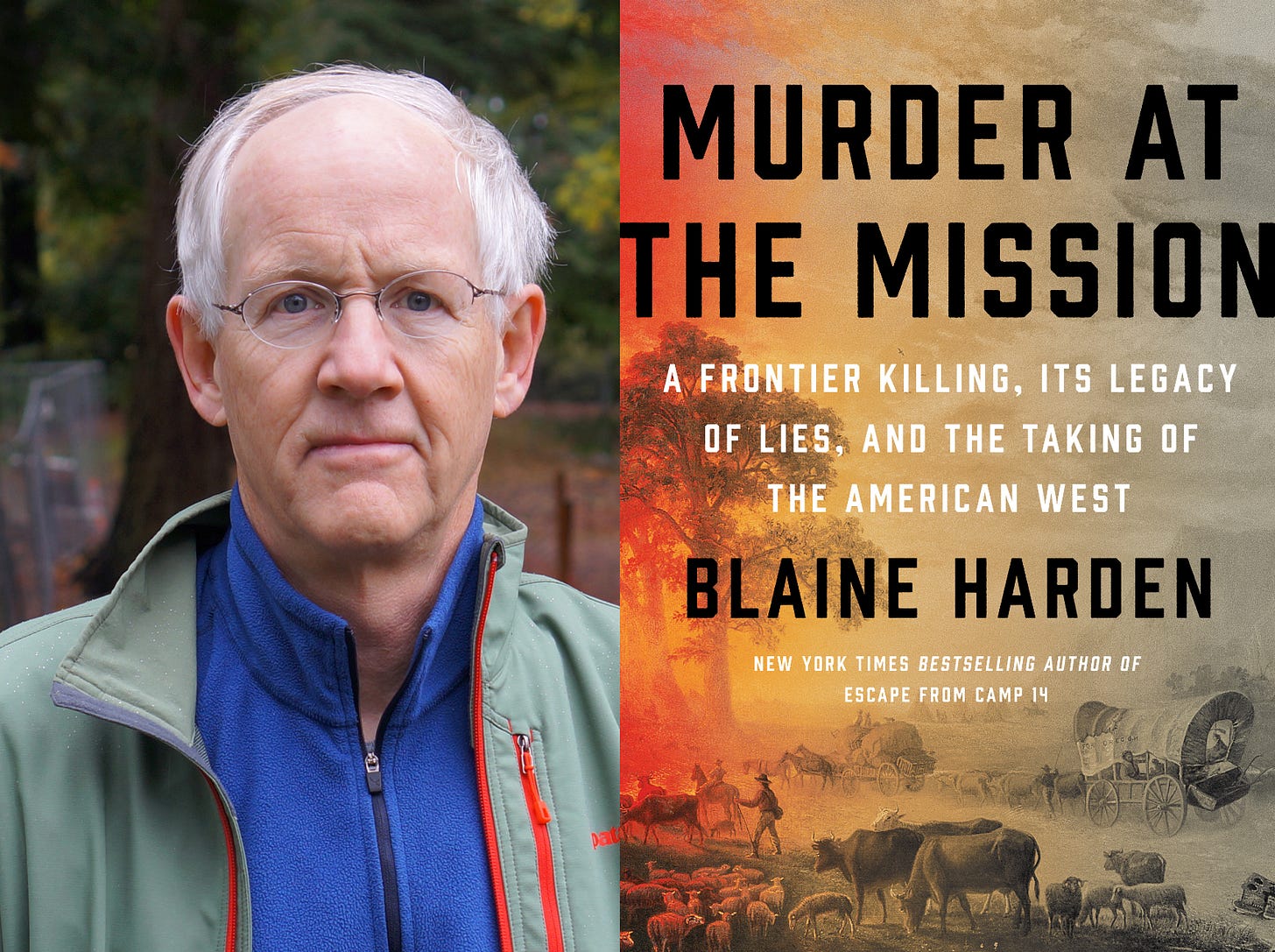Murder at the Mission: A Frontier Killing, Its Legacy of Lies, and the Taking of the American West by Blaine Harden
A book review by Anand Atre, MLA Alumni
Journalist Blaine Harden’s latest book, Murder at the Mission, debunks the widely disseminated extravagant narrative surrounding the 1847 Whitman Massacre, which led to the establishment of the states of Idaho, Oregon, and Washington in the U.S.
The sensationalized story of the Whitman massacre was historically taught in middle schools in Oregon and Washington and has even inspired school plays that paid homage to Dr. Marcus Whitman and his wife, Narcissa, as martyrs of a higher cause. This account celebrated Whitman as a hero who saved Oregon from the British to bring the land under U.S. control and also dedicated his life to medically saving the lives of Native Americans and to the “civilizing” mission, only to have the savage Cayuse people turn on him and his wife condemning them to a violent death.
Harden’s well-researched exposition details how Marcus and Narcissa Whitman initially came to the West from New York for Presbyterian missionary work to convert Native Americans to Christianity. However, the Cayuse, whom they hoped to “civilize,” had no interest in their religion. Harden points out that over the years, the Whitmans became strong proponents of White settler colonial expansionism and helped promote utilizing the Oregon Trail to take the land away from the Cayuse and other Native Americans for homesteaders. These actions caused the Cayuse to grow increasingly agitated as the Whitmans and the other settlers built large houses, brought animals to the Cayuse land, and refused to pay rent. During an outbreak of measles on Cayuse land, Harden intimates that Whitman, while providing legitimate treatment for White settlers, only ostensibly treated the Cayuse, causing many of them to die. The large number of Cayuse deaths, in comparison to the homesteaders, led to the view that Whitman was poisoning the Cayuse. The combination of events led to the Cayuse reaching a breaking point and embarking on the targeted killing of the Whitmans.
Following the Whitman murders, Harden shows how another Presbyterian missionary, Henry Spalding, conjured up a myth to glorify Marcus Whitman. Two notable fabrications include Spalding spinning a trip that Whitman had made to Boston to defend himself from church inquiries into a tale of Whitman having embarked on a treacherous journey back East to alert the government about a British plan to seize the territory of Oregon, thus exhibiting immense patriotism. Additionally, Spalding’s anti-Catholic proclivities worked their way into this myth, as he also argued without any evidence that Catholic priests at a local diocese had arranged Whitman’s murder and had employed the Cayuse to execute their plans. An ensuing ad hoc court trial resulted in five Cayuse hanging for the Whitman murders.
Harden skillfully demonstrates how Spalding’s myth of Whitman had significant currency in raising funds for missionary work and in the Oregon and Washington education system but has recently started to unravel as more research in pursuit of the truth has discredited it.
Harden’s book covers several themes that MLA students might find relevant to their studies. Firstly, Harden’s account elucidates the nefarious aspects of myths that embolden dehumanizing the other engender pernicious activities such as settler colonial expansion, sham courts, and lynch law, showing how they leave a persistent impact on subsequent generations through ongoing systemic injustices manifesting via land theft, water diversions, resulting in economic and socio-cultural hardships.
Secondly, the favorable impact of the 1988 Indian Gaming Regulatory Act on Cayuse’s casinos, which has fostered economic recovery and facilitated self-government, leads to contemplating different ideas and projects that could act as restitution to atone for historical injustices.
Thirdly, Harden’s account details the diversity and differences of Native American tribes in the area, yet how they all bore the brunt of the repercussions of the Whitman killings, thus exploring the concepts of collective punishment and subsequent tensions between indigenous communities.
Finally, the collective trauma that the Cayuse still experience, their hopes of discovering and eventually repatriating the remains of the five Cayuse hung for the Whitman killings, and the recent student protests expressing sentiments to remove the Marcus Whitman statute raises vital questions related to how we should try to remember the past, such that we can provide more accurate accounts of it and devise ways of bringing about collective healing.




